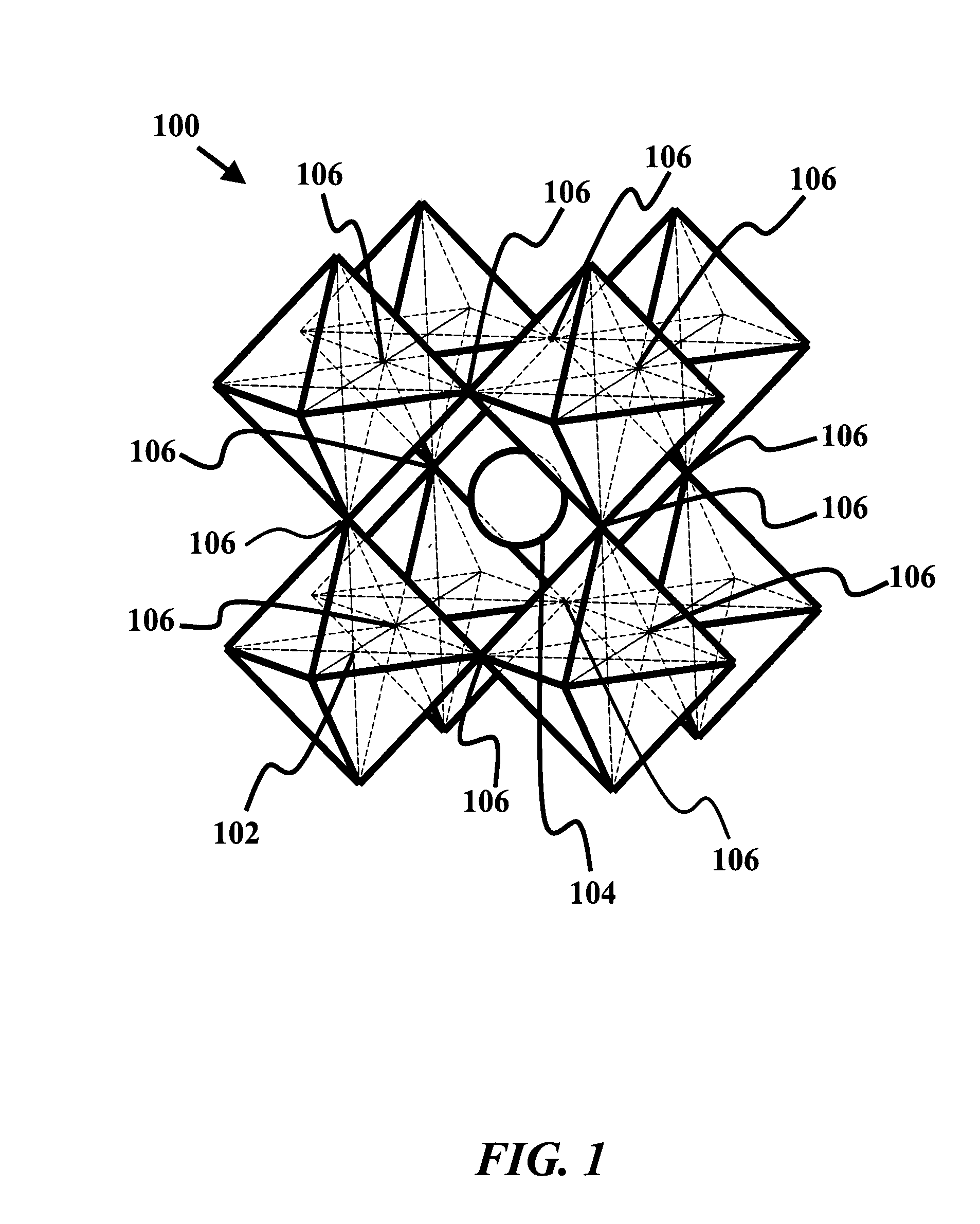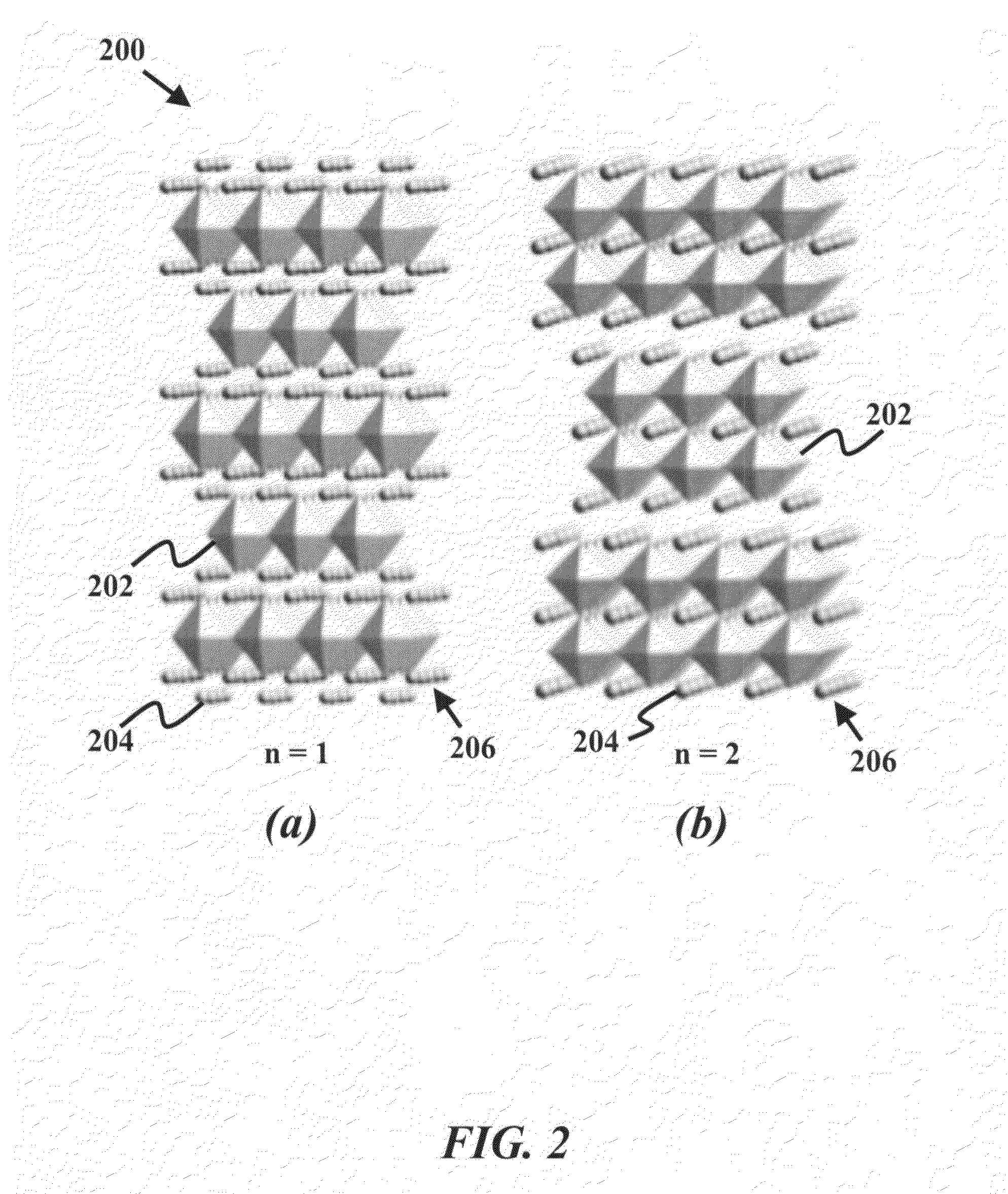Catalytic oxide anodes for high temperature fuel cells
a fuel cell and catalytic oxide technology, applied in the field of fuel cells, can solve the problems of limiting the optimal operational output, deficiency of one element, and difficult material selection for catalytic anodes, and achieve the effects of enhanced catalytic activity, enhanced electronic conductivity and oxygen vacancy formation
- Summary
- Abstract
- Description
- Claims
- Application Information
AI Technical Summary
Benefits of technology
Problems solved by technology
Method used
Image
Examples
Embodiment Construction
[0024]Although the following detailed description contains many specifics for the purposes of illustration, anyone of ordinary skill in the art will readily appreciate that many variations and alterations to the following exemplary details are within the scope of the invention. Accordingly, the following preferred embodiment of the invention is set forth without any loss of generality to, and without imposing limitations upon, the claimed invention.
[0025]The current invention provides an anode material having high catalytic activity and selectivity for carbon oxidation, sufficient oxygen non-stoichiometry, rapid oxygen chemical diffusion, wide thermodynamic stability window to withstand reducing environment, sufficient electronic conductivity and tolerance to sulfur and CO2 environments.
[0026]Perovskites consist of a rich family of oxides interesting properties, especially when doped properly. Many members of the perovskite family have been employed as active catalysts for a wide ra...
PUM
 Login to View More
Login to View More Abstract
Description
Claims
Application Information
 Login to View More
Login to View More - R&D
- Intellectual Property
- Life Sciences
- Materials
- Tech Scout
- Unparalleled Data Quality
- Higher Quality Content
- 60% Fewer Hallucinations
Browse by: Latest US Patents, China's latest patents, Technical Efficacy Thesaurus, Application Domain, Technology Topic, Popular Technical Reports.
© 2025 PatSnap. All rights reserved.Legal|Privacy policy|Modern Slavery Act Transparency Statement|Sitemap|About US| Contact US: help@patsnap.com


